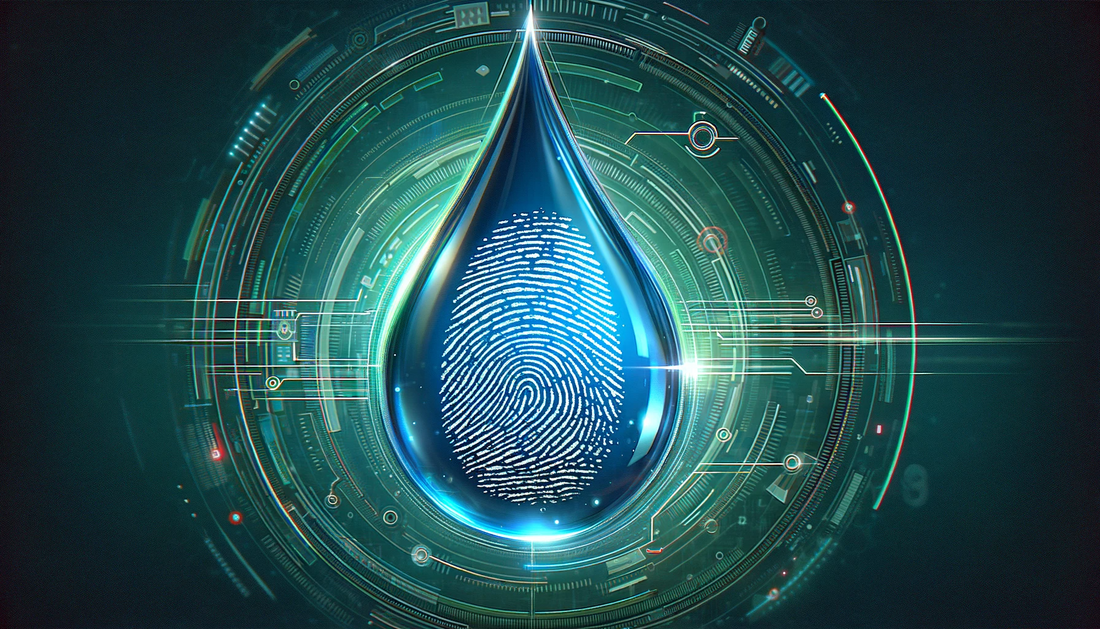
Digital Water Fingerprint
Share
In the ever-evolving world of sustainability and environmental stewardship, a groundbreaking concept is making waves: the digital water fingerprint. This innovative approach is redefining how we understand and manage one of our most precious resources. As directors of sustainability, ESG, CFOs, facility managers, and building operations directors, it's crucial to stay ahead of the curve in water management strategies. This post delves into the science and application of digital water fingerprinting, a tool that's not just smart and scientific, but also a testament to our commitment to the environment.
Understanding Digital Water Fingerprinting
Just as a human fingerprint is unique and tells a story, so does the digital water fingerprint. It's a method that involves identifying and tracking water sources by analyzing a combination of various measurable parameters and characteristics of water. These characteristics can include mineral content, temperature, pH levels, and more. By creating a unique 'fingerprint' for each water sample, we can track its origin, journey, and even forecast its future path.
Why Water Fingerprinting Matters
In the realm of sustainability and environmental governance, understanding the journey of water is not just about resource management; it's about securing the future. Water fingerprinting allows us to:
- Identify the Source: Whether it's for ensuring the purity of drinking water or tracing the origins of water in a natural ecosystem, knowing where water comes from is crucial.
- Detect and Address Leaks: In facilities management, leak identification is not just a matter of efficiency but also of environmental responsibility. Digital water fingerprinting can pinpoint leaks and their sources, enabling quicker, more targeted responses.
- Monitor Water Quality: Continuous tracking of water fingerprints helps in monitoring changes in water quality, which can be vital for both human consumption and ecological balance.
- Sustainable Water Management: With insights into water movement and quality, we can make more informed decisions about water usage, conservation, and treatment.
The Science Behind the Fingerprint
The process of creating a digital water fingerprint involves collecting data from various sensors and analyzing it through advanced algorithms. This data is then compared against a growing database of water fingerprints. As this database expands, our understanding of water's behavior and characteristics becomes richer and more nuanced.
various sensors and analyzing it through advanced algorithms. This data is then compared against a growing database of water fingerprints. As this database expands, our understanding of water's behavior and characteristics becomes richer and more nuanced.
Case Studies: Digital Water Fingerprinting in Action
- Leak Detection in Urban Infrastructure: In a city's complex water network, identifying leaks can be like finding a needle in a haystack. However, with digital water fingerprinting, one metropolitan area was able to detect and address leaks 50% faster, significantly reducing water waste and improving efficiency.
- Water Quality Monitoring in Industrial Facilities: A manufacturing plant used water fingerprinting to monitor the quality of its wastewater. This not only ensured compliance with environmental regulations but also helped in improving their water recycling processes.
- Sustainable Water Management in Agriculture: In an agricultural setting, digital water fingerprinting was used to optimize irrigation, reducing water usage while maintaining crop yields. This not only conserved water but also reduced the facility's overall environmental impact.
Challenges and Future Directions
While digital water fingerprinting offers immense potential, it's not without its challenges. Ensuring data accuracy, dealing with complex water systems, and integrating this technology into existing infrastructure are some hurdles that need to be overcome. Moreover, as we collect more data, the need for robust data security and privacy measures becomes paramount.
The future of digital water fingerprinting lies in its integration with other smart technologies like IoT (Internet of Things) and AI (Artificial Intelligence). This integration could lead to even more precise water management, predictive maintenance of water systems, and more effective conservation strategies.
A Step Towards a Sustainable Future
As we face the realities of climate change and resource depletion, tools like digital water fingerprinting become not just innovative solutions but necessary steps towards a sustainable future. For professionals in sustainability, ESG, facility management, and finance, embracing this technology is part of leading the charge in responsible environmental stewardship. It's about being smart, scientific, trustworthy, and humble in our approach to one of nature's most vital resources.
By understanding and implementing digital water fingerprinting, we're not just managing water; we're preserving our planet for future generations.
